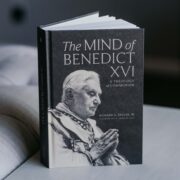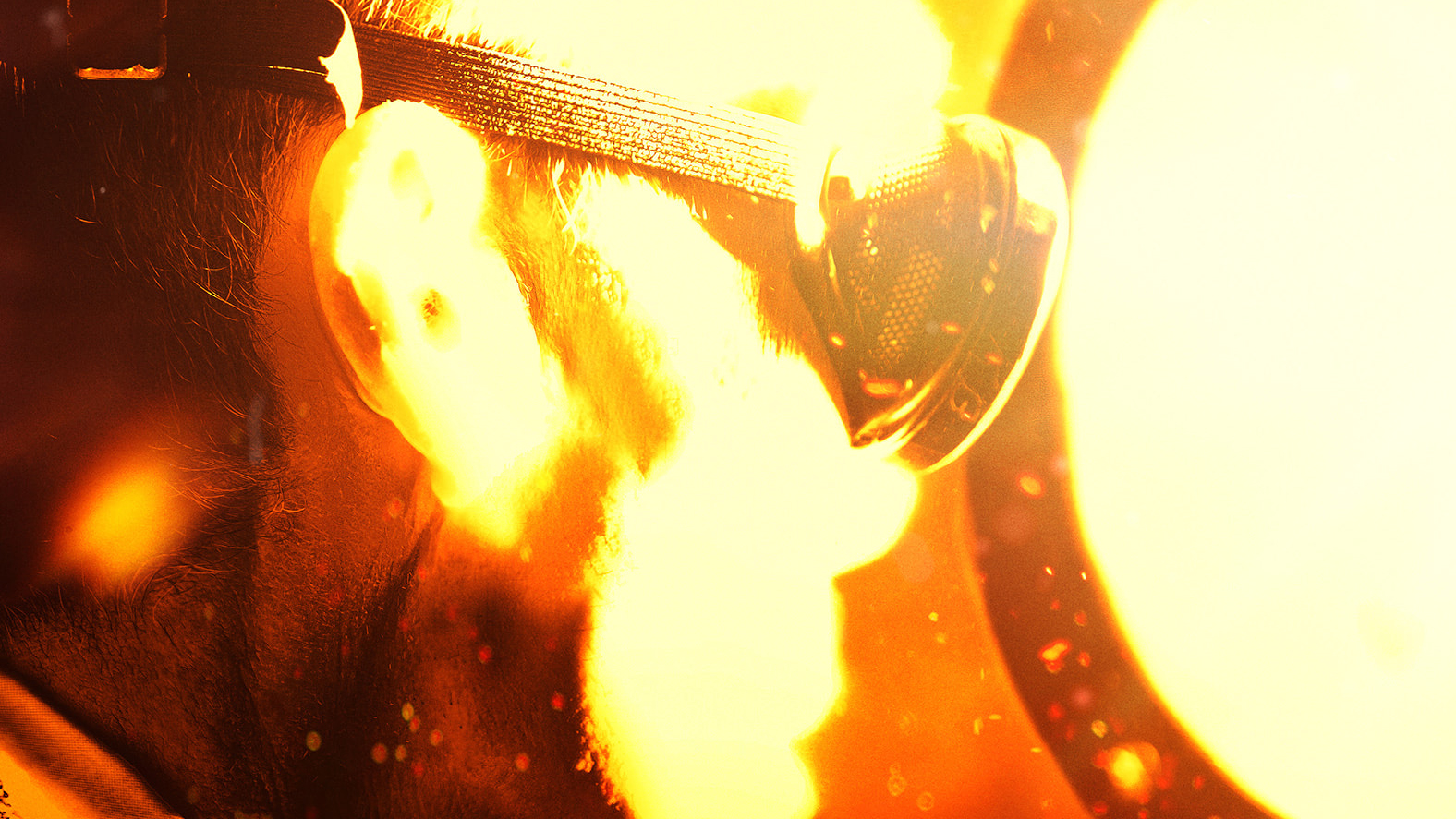If you have not done so, you can read Part I of Kody W. Cooper’s two-part essay here on Evangelization & Culture Online.
Part I of this essay reflecting on the new film Oppenheimer discussed the moral quandary that Oppenheimer faced as his team approached completion of the bomb. His argument that dropping the bomb would be a trigger for the creation of a world government that would usher in world peace was a failure of moral and political reasoning. But it was perhaps more likely that he so failed to reason given that his misconception of both nature and grace derived from his understanding of the scientific vocation as an agnostic enterprise, untutored by faith in God.
The scientist who does not understand his vocation under the wings of God’s providence and grace doesn’t really understand what he observes under the microscope. In reality, he finds there, in Kepler’s words, the “spirit and trace of God” in creation, not merely godless and purposeless “stuff” that is rightfully manipulated at will by man. On this point, Oppenheimer’s contemporary, Pope Pius XII, saw the truth with clarity.
Of course, any mention of the Venerable Servant of God Pius XII in this context must note that he has been subject to all sorts of attacks on his conduct during World War II, summed up in the epithet “Hitler’s Pope.” While this is not the place to adjudicate those historical arguments, suffice it to say that if the most recent iteration of the Pius Wars is any indication, the critiques of him have tended to ignore inconvenient evidence and amounted to slander. The most recent study, aided with expanded access to Vatican archives, has shown that Pius opposed the Nazis’ racist ideology, worked against Nazi tyranny, and helped save the lives of thousands of Jews.
In his remarkable 1948 address to the Pontifical Academy of Sciences, Pope Pius XII laid out a Christian perspective on science. It was a fitting setting, for the Academy’s history is a witness to the Church’s high valuation of the natural sciences. The Pontifical Academy of the Sciences has its roots in the Accademia dei Lincei under Clement VIII in 1603, one of the first academies established specifically for the purpose of scientific study of the natural world and of which Galileo was eventually a member. It was reestablished by Pius IX in the 19th century and Pius XI reconstituted and renamed the Academy in 1936.
Pius identified ours as “The Atomic Age,” as demarcated by the creation of the bomb, “the most terrible weapon, which the human mind has, up to now, devised.” After a thumbnail historical sketch highlighting the progress of physics’ understanding of the atomic world that culminated in the capacity to harness the energy from the atom, the pope offered praise to the scientist’s vocation: “Wonderful achievements of the human intellect, which scrutinizes and investigates the laws of nature, dragging humanity with it along new paths! Could there be a more noble conception?”
. . . idols, even if they promise some good, always demand sacrifice.
But he went on to insist that the scientific vocation must be embraced under God. In denying that he is peering into the order God designed, he suggested that the agnostic scientist lacks an upright impulse for humility. In other words, when the scientific vocation is framed as an agnostic enterprise, the scientist is apt to fancy himself a god, which is precisely what Oppenheimer’s story illustrates.
The human heart—Oppenheimer knew all too well—is restless. The film doesn’t include the fact that he loved quoting from George Herbert’s poetry and knew The Pulley. The poem recounts how God bestows upon man all manner of gifts, including honor, pleasure, and wisdom, but withholds from man rest:
But keep them with repining restlessness;
Let him be rich and weary, that at least,
If goodness lead him not, yet weariness
May toss him to my breast.
Yet, it doesn’t appear that Oppenheimer’s weariness ever tossed his restless heart to the bosom of his Creator. As an agnostic, he never returned to the faith of his Hebrew ancestors. When his friend Isidor Rabi heard Oppenheimer had taken up Sanskrit in earnest so that he could read the Bhagavada Gita, the Hindu scripture, Rabi was perplexed: “Why not the Talmud?” Nor, apparently, did he have faith in Donne’s “three-person’d God,” which inspired him to name the bomb’s testing site “Trinity.” And, of course, the notions that Niels Bohr was his “god,” and Oppie his “prophet” were not meant literally. That was a tongue-in-cheek metaphor for Oppenheimer’s real faith. In truth, Bohr came late into the Manhattan project to offer his advice to Oppenheimer as his peer, not as a god to his prophet.

Oppenheimer’s faith was in Science, which is to say, his was a Baconian faith in man and man’s ability to conquer and master nature for man’s own knowledge and power using the scientific method. As Oppenheimer explained in a 1945 lecture to the American Philosophical Society, the substance of scientists’ faith was “the general recognition of the value, the unqualified value of knowledge, of scientific power and progress.” This was the object to which his restless heart was directed. As his friend Freeman Dyson observed: “Restlessness drove him to his supreme achievement, the fulfillment of the mission of Los Alamos . . . ”
It is possible to set aside the politically naïve component of Oppenheimer’s argument for the bomb and focus in on the knowledge argument. Oppenheimer believed that, in the name of scientific power and progress, the scientific secret of Los Alamos needed to be revealed to the world. In Promethean fashion, Oppenheimer, in the name of Science, offered atomic fire to the world (which could be used for peaceful objects like generation of power). But if correct, this underscores the peril of reason unmoored from faith, since idols, even if they promise some good, always demand sacrifice.
As the film narrates, the moment the first bomb was successfully tested at Los Alamos, Oppenheimer’s thoughts went to (a paraphrase of) the god Vishnu’s line in the Gita: “Now I am become death, the destroyer of worlds.” There is some debate about what he really meant here. I think Oppenheimer glimpsed himself (literally, symbolically, and synecdochally) in that moment, albeit, perhaps in spite of himself. His free choice to direct his restlessness toward the creature rather than the Creator was the condition of becoming such a “god.” The testimony of Oppenheimer’s neighbor on St. John suggests he relished this. She witnessed Oppie’s festivities on the anniversary of the dropping of the bomb and remarked that “he transparently loved the Bomb and his lordly role in its creation.” Synecdochally, it could be said that Science, or perhaps more accurately, the new Scientist, had become a most terrible god, as all idols must.
And yet, as the film accurately (and cleverly) portrays, Oppie was a man of tortured conscience. Almost immediately, Oppenheimer experienced the pangs of guilt over the “poor little people,” e.g., the tens of thousands of Japanese men, women, and children civilians who were incinerated or died later from radiation poisoning. Perhaps his conscience was convicting him that, inasmuch as their fiery and radioactive deaths were offered as a sacrifice in the name of Science, the cost was too high. Even though Oppenheimer himself doesn’t seem to have admitted this in so many terms, he did admit in a 1965 television interview (which is not in the film), that he and his fellow physicists had “known sin,” the sin of pride, by thinking they knew what was best for man and the world.
“Now I am become death, the destroyer of worlds.”
Among the sacrificial victims of the bomb dropped on Nagasaki at 11:02 am on August 9, 1945, were two Roman Catholic priests, Frs. Saburo Nishida and Fusayoshi Tamaya, and about thirty of their parishioners who were gathered for confession in Urakami Cathedral, about 500 meters from ground zero of “Fat Man.” They all died instantly. Hibaku no Maria, also known as Our Lady of Nagasaki, with her charred face and burnt out eyes, is an enduring and haunting witness to the evils of that day.
As Frs. Nishida and Tamaya could have explained to Oppenheimer, the conviction of sin in one’s conscience generates the objective needs of confession and penance. And so it isn’t surprising that Oppenheimer in his first interview with President Truman shortly after the bombs dropped, said: “I feel I have blood on my hands.” But Truman did not (and indeed, could not) offer him the absolution he sought.
So Oppenheimer imposed a penance on himself: to spend the next several years advocating for international nuclear control and, when he realized that the Marxist ideology of the Soviets prevented them from cooperating with the West, he advocated restraint in development of America’s nuclear arsenal, opposing the hydrogen bomb’s creation. (The film also suggests that he chose to endure the kangaroo court as a form of penance.) His argument for restraint was not unreasonable. In order to avoid triggering a hydrogen bomb arms race, the United States should not test one, since Russia would be forced to respond in kind. Perhaps a window was open for an H-bomb test ban treaty that would be self-enforcing, since any such test could be detected. On the other hand, Oppenheimer didn’t seem to appreciate the moral force of the counterargument that, once the nuclear cat was out of the bag, nuclear armament in the face of a mendacious enemy hellbent on spreading communist tyranny around the globe, combined with a no first strike policy, was prudent statecraft. As the neorealists would argue, when nuclear powers have arsenals with second-strike capacities, it actually has a stabilizing effect, since it makes the cost of using nuclear weapons too high to be rational.
In the end, Oppie’s opposition was interpreted or portrayed by his opponents as disloyalty rather than mere dissent, which they used to orchestrate his political downfall. The U.S. and Soviet Union proceeded to create thousands of hydrogen bombs that were thousands of times more powerful than the bombs dropped on Hiroshima and Nagasaki.
Oppenheimer closes ominously with a closeup on the man. He is standing alone, stone-faced and porkpie-hatted, brooding on what he has unleashed on the world. Perhaps the takeaway is that brooding alone is the fate of the scientist who makes Science into his god.
